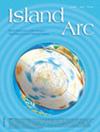P–T Evolution of Paleoproterozoic Dangoli Pelitic Gneisses, Baijnath Klippe, NW Himalaya: Insights From the Geochemistry and Zircon U–Pb Geochronology
Abstract
The Cenozoic Himalayan orogeny resulted from the continental collision between the Tibetan block and the northern Indian Precambrian shield. The latter, replete with evidence of Columbian supercontinent assembly, likely comprised the north Indian continental margin that was reworked mechanically and thermally during the Himalayan orogeny, and still survives as Precambrian vestiges in the Himalaya. Parts of this Paleoproterozoic crust, which now occur as nappes and klippen, were tectonically transported by the Main Central Thrust southwards over the Lesser Himalayan sedimentaries during the orogeny. The Absence of Columbian metamorphic signatures in these thrust sheets has intrigued geologists for long. We present evidence for a Middle Orosirian metamorphic event from the pelitic gneisses of the Almora Group in the Baijnath Klippe from NW Himalaya. The physical conditions of metamorphism have been inferred using mineral chemistry, bulk-rock chemistry, and phase section modeling using Perple_X software in the MnNKCFMASHT model system. Zircon U–Pb geochronology for the Dangoli pelitic gneisses yielded a robust upper intercept at 1891 ± 12.82 Ma. The P–T phase diagram indicates that the peak mineral assemblage stabilized in the P–T range of 0.41–0.46 GPa and 675°C–700°C suggesting upper amphibolite facies metamorphism. Integrated metamorphic and geochronological results indicate that the Dangoli pelitic gneisses were derived by muscovite dehydration melting of metasediments during the peak metamorphism related to syn-collisional setting broadly coeval with the Paleoproterozoic magmatism during the Columbia supercontinent assembly. The evidence for definite involvement of Paleoproterozoic high-grade metamorphic rocks of the northern Indian shield in the Himalayan orogeny is being documented.

 求助内容:
求助内容: 应助结果提醒方式:
应助结果提醒方式:


